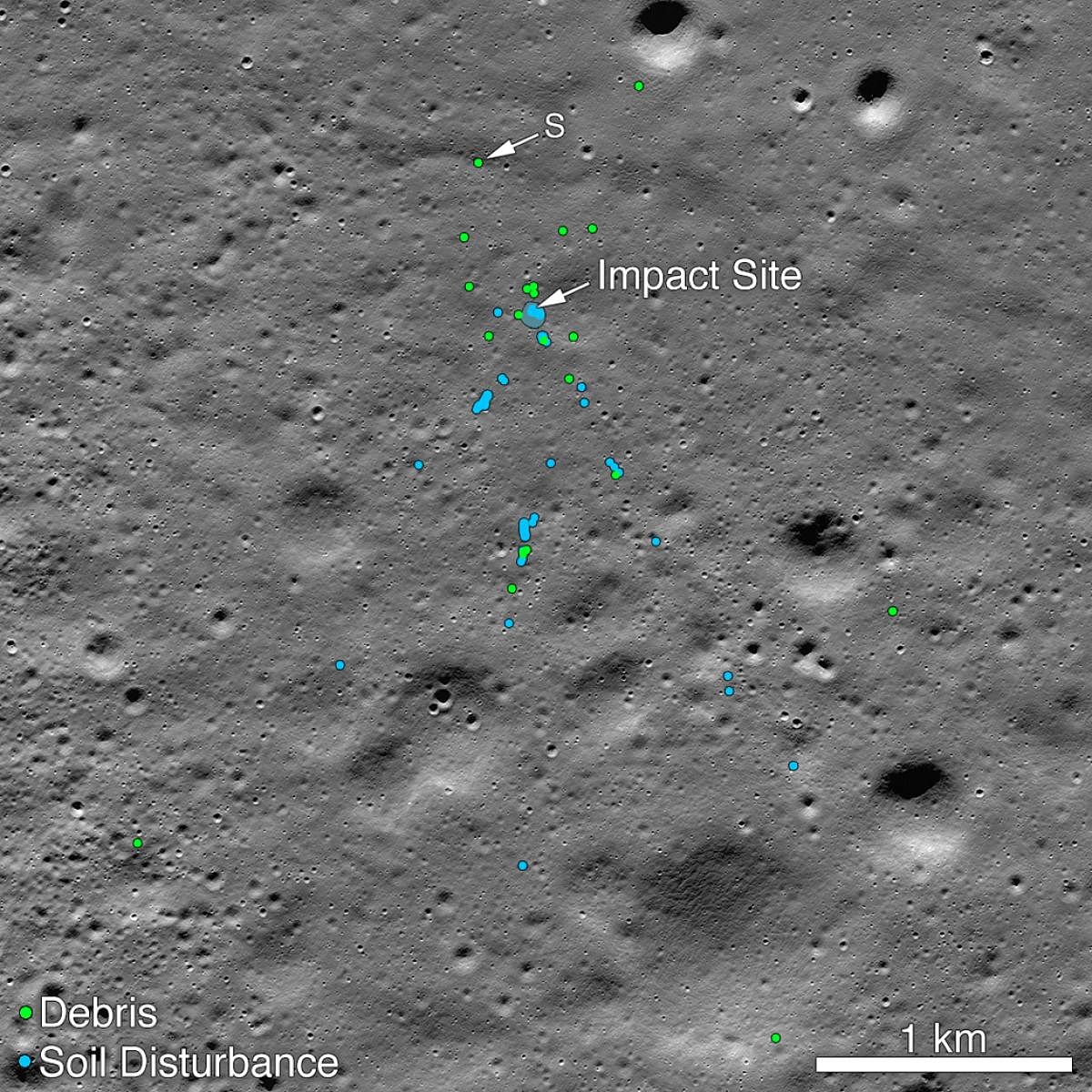American space agency, the National Aeronautics and Space Administration (NASA) has detected the debris of Chandrayaan-2 lander, Vikram on the Moon’s surface. This is a major breakthrough after all contact was lost with the Lander, a few minutes before the planned soft-landing on September 7.
Early Tuesday morning, NASA tweeted an image of Vikram’s impact site, captured by its Lunar Reconnaissance Orbiter (LRO). The space agency credited Chennai engineer Shanmuga Subramanian for detecting the debris first, about 750 metres northwest of the main crash site.
Subramanian had drawn NASA’s attention to a single bright pixel identification in the first mosaic of images clicked by the LRO camera. “Shanmuga Subramanian contacted the LRO project with a positive identification of debris. After receiving this tip, the LROC team confirmed the identification by comparing before and after images.”
On September 17, the LRO Camera team had released the first mosaic of the impact site on September 26. “Many people have downloaded the mosaic to search for signs of Vikram. When the images for the first mosaic were acquired the impact point was poorly illuminated and thus not easily identifiable,” NASA explained.
Two subsequent image sequences were acquired on October 14, 15 and November 11. “The LROC team scoured the surrounding area in these new mosaics and found the impact site (70.8810°S, 22.7840°E, 834 m elevation) and associated debris field. The November mosaic had the best pixel scale (0.7 meter) and lighting conditions (72° incidence angle).”
After repeated attempts to reestablish contact with the Lander failed, the Indian Space Research Organisation (Isro) had subsequently confirmed that Vikram had a hard-landing on the lunar surface. Isro was attempting to land on the south polar region, a feat no country has achieved before.
As part of the estimated Rs 1,000 crore-Chandrayaan-2 mission, the Lander and the Rover Pragyan inside were to undertake a series of manoeuvres. Minutes after touchdown, the Rover was scheduled to roll out of Vikram and scan the lunar surface for an entire lunar day, equivalent to 14 Earth days.
Isro did not dub it a failure but shifted its focus to the Orbiter, now with an extended life of seven years. It is expected to carry out detailed surface mapping of the Moon with its advanced onboard cameras, analysing the mineral and water content.
Onboard the powerful GSLV Mark III rocket, Chandrayaan-2 was launched from Sriharikota on July 22, a week after an earlier attempt was called off due to a technical glitch. The spacecraft had performed remarkably well, meeting all the parameters before the communication breakdown with the Lander.
